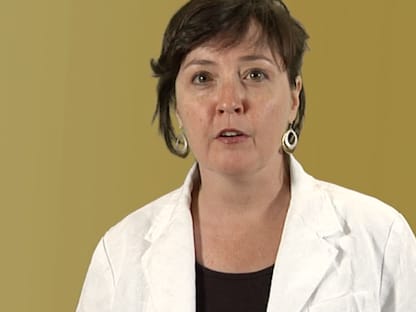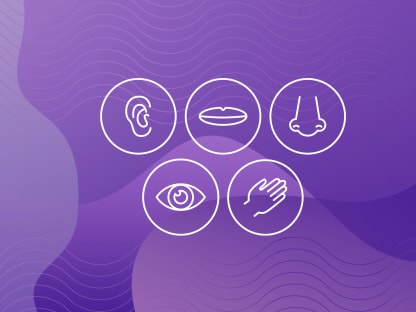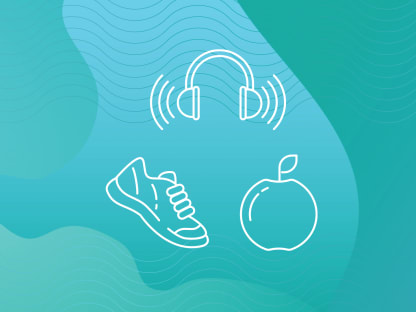Fibromyalgia
Condition Basics
What is fibromyalgia?
Fibromyalgia is a condition that causes widespread pain in the muscles and soft tissues. This pain is felt above and below the waist and on both sides of the body. People with fibromyalgia feel pain, tenderness, or both even when there is no injury or inflammation. The pain can be long-lasting (chronic). But fibromyalgia isn't life-threatening, and it doesn't damage the muscles, joints, or internal organs.
Fibromyalgia is a syndrome or a set of symptoms that occur together. It has no cure. When it's not controlled, you may not have any energy. Or you may feel depressed or have trouble sleeping. But with treatment, most people with fibromyalgia are able to work and do their regular activities.
What causes it?
No one knows for sure what causes fibromyalgia. But experts have some ideas. For example, nerve cells may be too sensitive. Or chemicals in the brain (neurotransmitters) may be out of balance.
What are the symptoms?
The main symptoms of fibromyalgia are a deep or burning pain in your trunk, neck, low back, hips, and shoulders, and tender points on the body that hurt when pressed. Some people have other problems, such as fatigue, sleep problems, and depression. Symptoms tend to come and go.
How is it diagnosed?
There are no specific tests for fibromyalgia. You'll probably have lab tests to make sure that you don't have another condition that causes pain, such as rheumatoid arthritis or lupus. Doctors diagnose fibromyalgia by using a set of guidelines to assess the pattern of pain and other symptoms.
How is fibromyalgia treated?
Treatment is focused on managing pain, fatigue, depression, and other symptoms common in fibromyalgia. The goal is to break the cycle of increased sensitivity to pain and decreased physical activity.
You may be able to control your symptoms by:
- Getting regular exercise.
This is one of the best ways to manage the pain.
- Taking medicine.
Medicines may help you sleep better, relax your muscles, or relieve muscle and joint pain.
- Going to counseling.
This can help you cope with long-term (chronic) pain.
- Taking care of yourself.
Good self-care includes finding better ways to handle stress, having good sleep habits, and talking to your doctor if you have symptoms of depression.
Some people with fibromyalgia also find complementary therapies helpful. These include tai chi, behavioral therapy, and relaxation techniques.
Finding the right treatment can take time. You may have to try several different treatments to find an approach that works for you.
Health Tools
Health Tools help you make wise health decisions or take action to improve your health.
Cause
No one knows for sure what causes fibromyalgia. But experts have some ideas, such as:
- Nerve cells may be too sensitive.
- Chemicals in the brain (neurotransmitters) may be out of balance.
Many people connect the start of their symptoms to a certain event. Examples include the flu, an injury or surgery, or emotional trauma and stress. An event of this type combined with other things, such as being more sensitive to pain, may lead to fibromyalgia in some people.
What Increases Your Risk
Certain things may make you more likely to have fibromyalgia. Things that increase your risk (risk factors) include:
- Being female.
- Having certain health problems, such as rheumatoid arthritis, lupus, mononucleosis, or depression.
- Having been through a traumatic event (such as a car accident).
- Having problems with sleep.
- Having a family history of fibromyalgia.
Symptoms
The main symptoms of fibromyalgia are:
- Deep or burning pain in your muscles or joints. Pain can be in many places in your body.
- Tender points (or trigger points) on the body that hurt when pressed.
People with fibromyalgia may have other problems along with pain, such as:
- Anxiety or depression.
- Fatigue that gets in the way of work and daily activities.
- Sleep problems, such as trouble falling asleep or staying asleep, or waking up feeling tired.
- Headaches.
- Morning stiffness.
- Trouble thinking clearly.
- Irritable bowel syndrome.
Symptoms tend to come and go. You may have times when you hurt more, followed by times when symptoms happen less often, are milder, or are absent (remission). Some people find that their symptoms are worse in cold and damp weather, during times of stress, or when they try to do too much.
What Happens
For most people, fibromyalgia seems to involve a cycle of muscle pain, increased sensitivity to pain, and inactivity that may be made worse by sleep problems and fatigue.
- Increasing pain causes a person to be less physically active.
- Muscles that aren't exercised regularly are more likely to be irritated during activity. And it may be that people with fibromyalgia are more sensitive to pain or have muscles that are more easily irritated.
- The irritated muscles are painful. Some doctors think that the muscles of people with fibromyalgia stay sore because they don't repair themselves as well as they should.
- Muscle pain, sometimes occurring with disrupted sleep and daytime fatigue, leads to less and less activity.
Fibromyalgia is a long-lasting (chronic) condition with no cure, but it can be controlled. It doesn't damage the muscles, joints, or internal organs. Most people adjust to their symptoms and can keep working and doing daily activities.
When to Call a Doctor
If not diagnosed
Call your doctor if you've had the following symptoms for several weeks without an obvious cause. They may be signs of fibromyalgia, especially if they have developed gradually.
- Widespread muscle tenderness and pain, particularly on both sides of the body and both above and below the waist
- Disturbed sleep (tossing, turning, waking up frequently during the night) and waking up feeling tired and unrested
- Muscle and joint stiffness that doesn't get better when you move around
If diagnosed
If you have fibromyalgia, call your doctor if you have:
- Symptoms of depression, such as a loss of interest in things you usually enjoy or changes in eating and sleeping habits. These can often be treated if you tell your doctor about them.
- New symptoms, or your existing symptoms get worse. Your doctor may need to reassess your treatment, such as adjust your medicines or prescribe different ones.
Who to see
Health professionals who may be able to help you with fibromyalgia include:
You may need to see a specialist who has experience with fibromyalgia. These include:
- Rheumatologists, who have the most experience with diagnosing fibromyalgia.
- Pain management specialists, who have experience with treatment.
Pain management programs can be helpful too. These typically include a team of doctors, counselors, physical therapists, nurses, and pharmacists who can help you develop a strategy for pain management. Your personal program may include medicines, complementary therapies, diet, exercise, and counseling.
Exams and Tests
There are no specific tests for fibromyalgia. You'll probably have lab tests to make sure that you don't have another condition that causes pain, such as rheumatoid arthritis or lupus. Your doctor will also ask questions about your medical history and do a physical exam.
Doctors use a set of guidelines to diagnose fibromyalgia. You may be diagnosed with fibromyalgia if you have:
- Widespread pain. Pain is widespread if it's above and below your waist and on the right and left sides of your body.
- Other symptoms such as fatigue, trouble sleeping, and trouble thinking.
- Symptoms that have lasted for at least 3 months.
- No other medical explanation for why you feel this way.
Fibromyalgia is sometimes diagnosed or described using pain and tenderness at 18 specific spots on the body. These spots are called tender points or trigger points.
Learn more
Treatment Overview
Treatment is focused on managing pain, fatigue, depression, and other symptoms common in fibromyalgia. The goal is to break the cycle of increased sensitivity to pain and decreased physical activity.
There are many steps you can take to manage your symptoms. The treatment you need or want may be based on:
- How bad your symptoms are.
- Whether the condition is disrupting your daily life.
- What kinds of changes in your life you are willing and able to make.
Because the symptoms of fibromyalgia can come and go, you may find it hard to judge whether a certain treatment is really working. Different people may respond differently to each type of treatment. Many people with fibromyalgia have other joint or muscle diseases (such as rheumatoid arthritis or lupus) that need to be treated too.
Try to be patient. Finding the right treatment can take time. You may have to try several different treatments to find an approach that works for you.
Exercise
Getting regular exercise, especially cardiovascular exercise, is one of the best ways to manage fibromyalgia. Pool exercise, like water aerobics or swimming, is a good example.
It's important to build up your exercise program slowly so you don't get sore muscles that cause you to want to stop exercising. Working with a physical therapist familiar with fibromyalgia may be helpful.
Medicines
Medicines are part of the long-term treatment of fibromyalgia. They may help you sleep better, relax your muscles, or relieve muscle and joint pain. Your doctor may suggest prescription medicines, such as antidepressants, muscle relaxants, and anticonvulsants. Or your doctor may suggest nonprescription pain relievers.
Not all people with fibromyalgia will need, want, or benefit from medicines. You might need to try more than one medicine before you find one that works best for you. You may also find that a medicine that has been helping your symptoms seems to not work as well over time.
Counseling
Cognitive behavioral therapy and other forms of counseling, including relaxation therapy and biofeedback, can help people who have fibromyalgia. Counseling can help with the pain of fibromyalgia. It can also help with sleep problems and fatigue. And it may improve your mood.
Self-care
Taking care of yourself is an important part of managing fibromyalgia. For example, you can:
- Identify sleep problems, if you have them. Then learn about ways to get more restful sleep.
- Relieve pain and stiffness with medicines and heat.
- Identify "triggers" that seem to make your symptoms worse. Then you can learn to avoid or manage them. Triggers may be a change in the weather, certain activities, stress, or a lack of sleep.
- Talk to your doctor if you have signs of depression or anxiety.
With help, you can start working on most of these goals at home. You may have a team of health professionals to help you.
Learn more
Watch
Self-Care
Home treatment is the most important part of treating fibromyalgia. There are many things you can do over time to treat your symptoms.
- Exercise regularly.
Of all the treatments for fibromyalgia, cardiovascular (aerobic) exercise may have the most benefit in reducing pain and other symptoms and in improving your overall condition. Work with a physical therapist or other professional who has expertise with fibromyalgia to build an exercise program that works for you. And then stay with it.
- Avoid triggers or stressors that make your symptoms worse, if you can.
Common triggers include cold or damp weather, poor sleep, fatigue, physical or emotional stress, and being too active.
- Improve sleep.
Sleep disturbances seem to both cause and result from some of the other symptoms of fibromyalgia, such as pain. Learn good sleep habits. And try to get enough sleep each night.
- Relieve pain.
Heat therapy, massage, gentle exercise, and short-term use of nonprescription pain relievers may be helpful.
- Reduce stress.
Finding healthy ways to cope with stress may help reduce your pain.
- Learn about fibromyalgia.
The more you know about fibromyalgia, the more control you will have over your symptoms. People who feel more in control also tend to be more active and report less pain and other symptoms.
- Learn ways to manage your memory problems.
Feeling as though you are not thinking clearly—sometimes called "fibro fog"—increases stress and can make memory problems worse. Simple things like writing yourself notes can help you feel more in control.
- Have a good-health attitude.
It's hard to stay positive when you don't feel well. But a good attitude helps you focus less on your challenges and feel more healthy.
The best results occur when you take an active, committed role in your own treatment. You may need to adjust your lifestyle to fit home treatment, especially regular exercise, into your daily routine. It may take time to find an approach that works for you. Try to be patient. And keep in mind that consistent home treatment usually can help relieve or control symptoms of fibromyalgia.
Learn more
Watch
Medicines
Medicines are often part of the long-term treatment of fibromyalgia. They may help when symptoms flare up. But not all people with fibromyalgia will benefit from medicines.
Medicines may be used to improve sleep, relieve pain and fatigue, and (in some cases) treat depression. These improvements in symptoms may allow you to feel better and to be more active. Medicines used for fibromyalgia include:
- Cyclobenzaprine (Amrix).
- Antidepressants, such as duloxetine (Cymbalta), milnacipran (Savella), and amitriptyline (Elavil).
- Anticonvulsants (seizure medicines), such as pregabalin (Lyrica) and gabapentin (Neurontin).
Tramadol (Ultram) is sometimes used for pain. Sometimes it is combined with acetaminophen.
Your doctor may try more than one medicine before finding one that works best for your symptoms. Sometimes a medicine that has been helping your symptoms doesn't seem to work as well over time. Talk with your doctor if you aren't getting relief.
Learn more
Watch
Other Treatment
Cognitive techniques and stress management
The pain and other symptoms of fibromyalgia can get worse during stressful times. The good news is that there are a lot of things you can do to lower your stress. For example, research shows that you can change how you think. And how you think affects how you feel.
Here are some techniques you can try on your own or with help from a therapist or counselor trained in muscle relaxation, meditation, biofeedback, or cognitive behavioral therapy:
- Biofeedback
- Breathing exercises for relaxation
- Cognitive behavioral therapy for pain management
- Guided imagery to relax
- Progressive muscle relaxation
- Mindfulness-based stress reduction
- Reframing negative thoughts
Complementary treatments
Complementary treatments that have been used to treat fibromyalgia include:
- Acupuncture.
- Chiropractic therapy.
- Dietary supplements, herbal products, and vitamins.
- Massage therapy.
- Meditation.
- Tai chi and qi gong.
- Yoga.
Most mind and body practices—such as acupuncture, tai chi, and yoga—are safe when used under the care of a well-trained professional. Choose an instructor or practitioner as carefully as you would choose a doctor.
Talk with your doctor about the safety and potential side effects of the treatment. Remember that fibromyalgia doesn't physically harm you or damage your body. A treatment that could be harmful may not be worth the risk, especially when its benefits are unproven. Avoid treatments that may be harmful, such as unusual diets or excessive vitamin or mineral supplements. (A daily multiple vitamin-mineral supplement is okay. Try to avoid taking more than 100% of the recommended dietary allowance for any vitamin or mineral unless your doctor prescribes a special supplement.)
Learn more
Watch
Credits
Current as of: July 31, 2024
Author: Ignite Healthwise, LLC Staff
Clinical Review Board
All Healthwise education is reviewed by a team that includes physicians, nurses, advanced practitioners, registered dieticians, and other healthcare professionals.
Current as of: July 31, 2024
Author: Ignite Healthwise, LLC Staff
Clinical Review Board
All Healthwise education is reviewed by a team that includes physicians, nurses, advanced practitioners, registered dieticians, and other healthcare professionals.











